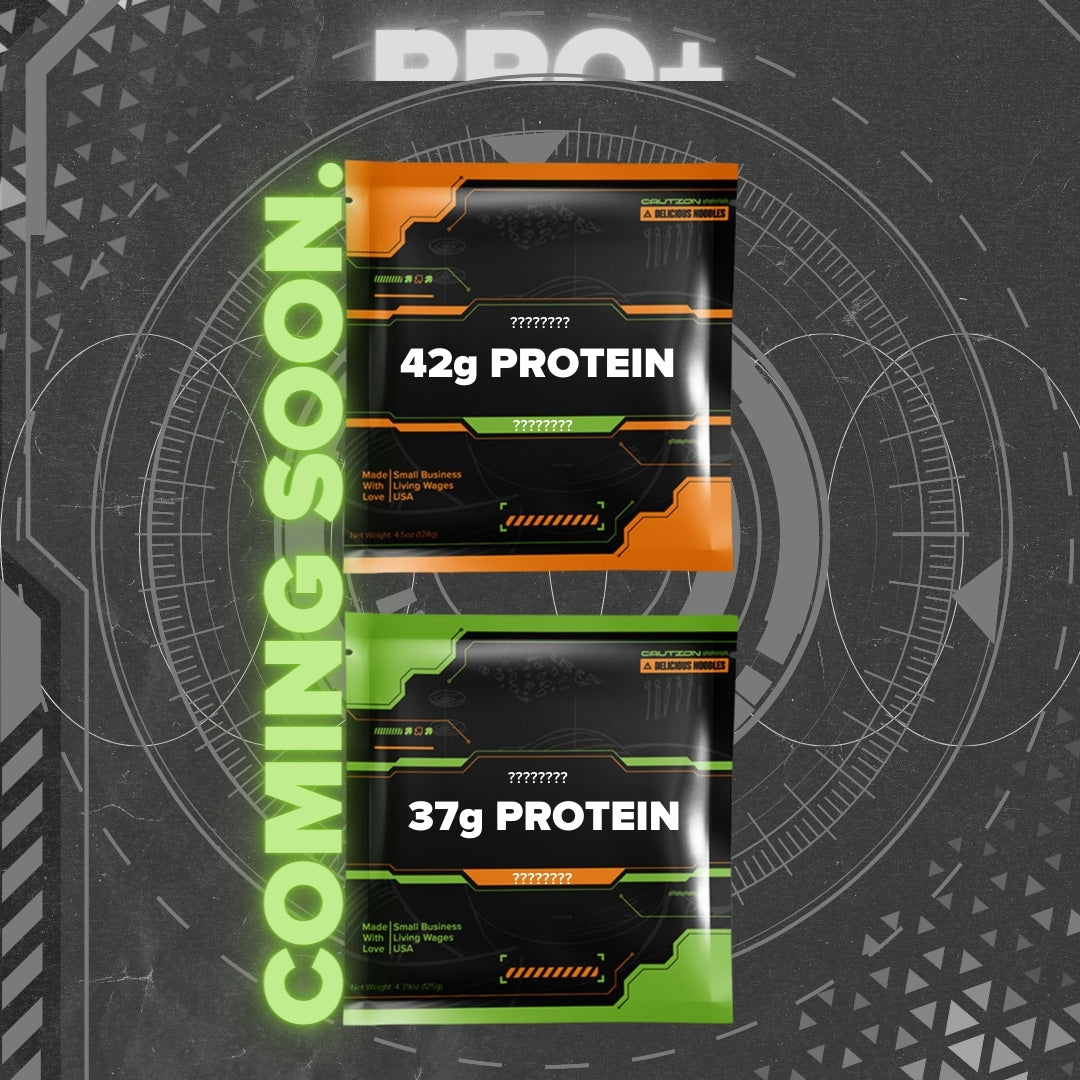
Why We're Taking Protein To The Next Level
Share
Hey there! Tim, Founder/CEO here.
In the recent survey, people said that high protein was one of the most important parts of our ramen. And if you know the story of why Vite Ramen was started, then you’ll know one of the reasons was because I wanted my protein and ramen at the same time.
Well, nowadays, I need a lot more protein than I used to... So, too, is it time to create an upgraded version of Vite Ramen as well.
But first, let’s take a step back and answer this question:
Why Is Protein So Important?
Let’s address the question... with another question.
What is the easiest way to build lean muscle and change body composition without doing any exercise?
Eat more protein.
(you’ll notice I didn’t say “lose weight”-- that’s on purpose, as I strongly support body neutrality, but that’s a discussion for another day)
In fact, eating more protein can also reduce pain, increase satiety, and improve energy levels. Sounds like a miracle, right? Well, sort of. There are caveats, of course. Hear me out.
Our bodies are made primarily out of protein. Every muscle, every tendon, even your skin, heart, organs are made out of protein-- Even our bones are made out of 50% protein. Protein literally is the primary building block of everything that we are, and that’s exactly why it’s so important.
So first, how does eating more protein let you build muscle and change body composition without doing any exercise, and how much would you need to eat?
Well... basically, everything I said above all ties together. Protein has the highest Thermic Effect of Food, or TEF, which basically means that it takes the most energy to digest out of the three macronutrients, the other two being carbs and fats. The act of your body digesting food requires some amount of energy, and your body uses a full 20%-30% of the energy that it would take in from protein to digest it, compared to the 5-10% of carbs and 0-3% of fats.
Study: https://www.ncbi.nlm.nih.gov/pmc/articles/PMC524030/
Footnote: This is on average, and individuals will vary.
MATH INCOMING. Scroll a bit to the big bolded part if you want the summary.
Let’s take a meal of 650 calories, for instance, and assume:
40%, or 260 calories come from carbs
20%, or 130 calories comes from protein
40%, or 260 calories comes from fat
Footnote: THESE NUMBERS ARE ARBITRARY AND FOR EXAMPLE ONLY AND DO NOT REPRESENT A BALANCED MEAL. However, this kind of macronutrient balance is fairly common, especially with fried or fatty foods.
Doing the math assuming the middle point of the TEF ranges(7.5% for carbs, 25% for protein, 1.5% for fats), we can then assume that:
19.5 calories are used to digest the carbs
32.5 calories are used to digest the protein
3.9 calories are used to digest the fats
Total calories used in digestion: 55.9
Now, what happens if we replace 10% of our calories from fat with protein, and 10% of our calories from carbs with protein?
Now we get:
30%, or 195 calories come from carbs
40%, or 260 calories come from protein
30%, or 195 calories from fat
Doing the math again, we get:
14.63 calories are used to digest the carbs
65 calories are used to digest the protein
2.93 calories are used to digest the fats
Total calories used in digestion: 82.56 calories, or 26.66 calories more, or 47.69% more calories burned in digestion
Add that up for 3 meals a day, and that would be about 80 calories...
Meaning you would burn the same amount of calories an average person would use jogging for 10 minutes.
Just by eating more protein. Another bonus is that protein is highly satiating, which means that you’ll feel fuller, sooner, and also for longer.
This is the same amount of total calories eaten. If you think you could benefit by jogging for 10 minutes a day, then this would give a similar effect in straight calories. For the sake of simple discussion, we’re ignoring the other benefits jogging would bring.
Protein, being the building block of muscle, also means that your body would be able to build muscle where you’re using it, meaning that you’ll overall be fitter and feel better with higher energy levels. Because so much of our body is made out of protein, and we require protein for regeneration and healing, it also significantly affects healing, even from day to day activities like a sore back from sitting in a chair too long.
There are even preliminary studies showing that additional protein after surgeries could improve healing times: https://www.ncbi.nlm.nih.gov/pmc/articles/PMC8970868/
After all, if a brick building needs repairs, you need to provide bricks to repair it, and so if our bodies are made out of protein, we need protein to repair it, right?
Of course, the same concept applies with the brick building-- This only works up to a certain point, and providing more bricks than the building needs wouldn’t provide any additional benefits to its repair or growth. Same with your body!
A good amount of protein per day to aim for is 0.7g to 1g per pound of bodyweight.
For a 150lb person, that means 105g to 150g protein a day.
For a 200lb person, that means 140g to 200g protein a day.
Of course, these are just goals to hit. Sometimes I’ll get the 150g I aim for, and other days(like today, when I’m writing this), I’ll only get 80g because I don’t want to drink a protein shake right before bed.
But of course, the next question is, how do I get that much protein, and how much protein should I get per meal? Is there a limit? Is it safe?
All great questions!
...That I’ll save for another time, because this is getting really long already. Hope you learned something, and look forwards to this new, even higher protein version we're making coming out soon!
Remember to be kind, and savor life’s little victories, and I’ll see you next time!
-Tim, CEO/Founder Vite Kitchens
